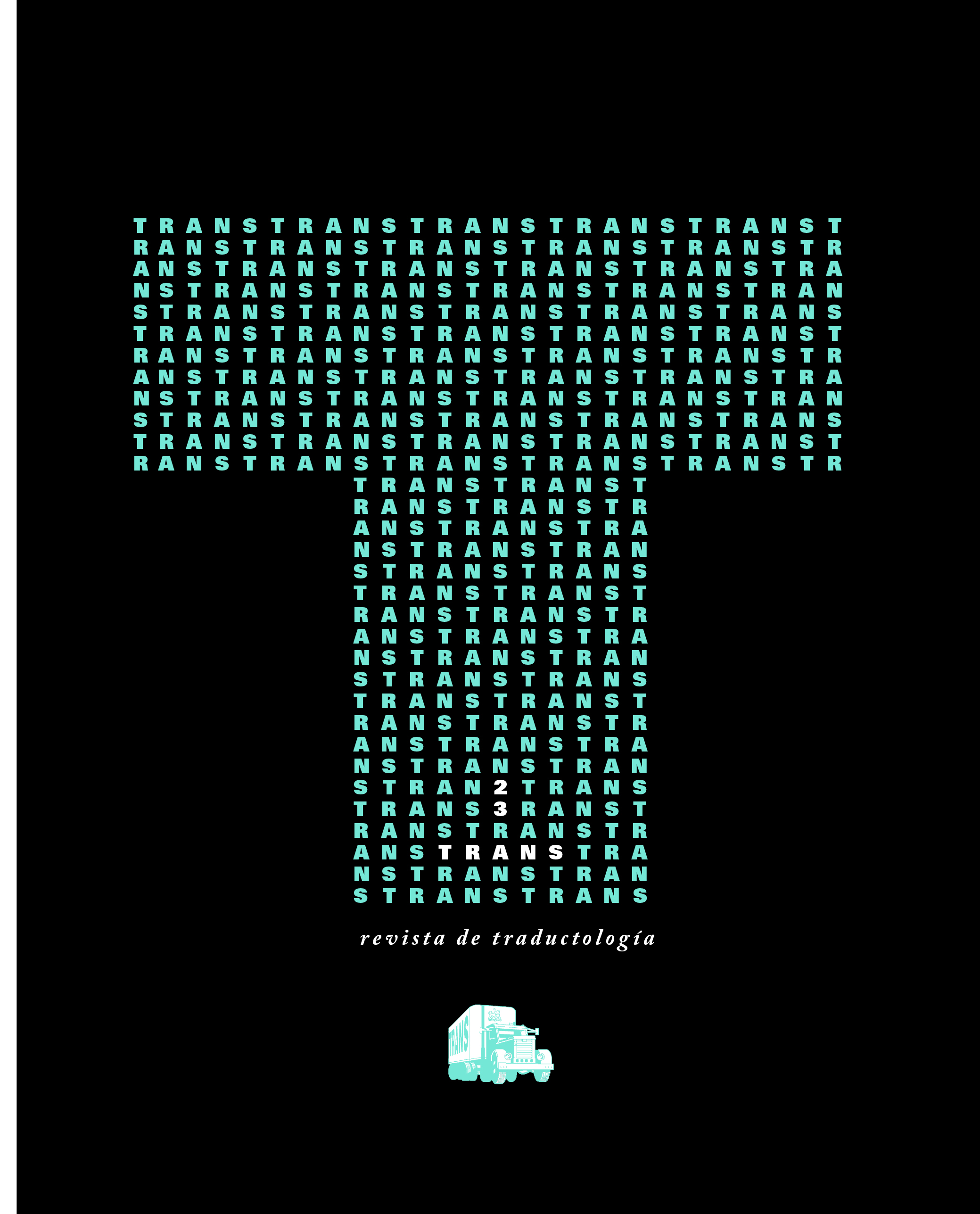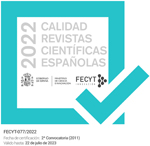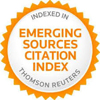«He became our interpreter, our spokesman, he had a leading role!». Interpretar en los campos rusos de prisioneros de la Primera Guerra Mundial
DOI:
https://doi.org/10.24310/TRANS.2019.v0i23.5244Palabras clave:
prisionero de guerra, Primera Guerra Mundial, interpretación, Bourdieu, relaciones de poderResumen
La interpretación y la traducción en las zonas del conflicto ponen en cuestión los tradicionales modelos de rol y desvelan el poder y la ambivalencia de la actividad de la mediación. El presente artículo analiza las situaciones de interpretación en los campos de prisioneros de guerra de la Primera Guerra Mundial referidas por los prisioneros del Imperio alemán y la Monarquía austrohúngara en sus memorias. Al subrayar las funciones sociales atribuidas a y desempeñadas por los/las intérpretes, se afirma que la mediación lingüística no es sólo un factor constitutivo para la implementación y el funcionamiento de los campos de prisioneros de guerra, sino que también desvela el carácter ambivalente de la comunicación bajo condiciones hostiles.
Descargas
Métricas
Citas
References
Andrew , Christopher and Simona Tobia (2014): Interrogation in War and Conflict. A Comparative and Interdisciplinary Analysis, London and New York: Routledge.
Askew , Louise and Myriam Salama-Carr (2011): “Interview: Interpreters in Conflict – the View from Within“, Translation Studies, 4/1, 103–108.
Bartlo miejczyk, Magdalena (2017): “The interpreter’s Visibility in the European Parliament“, Interpreting, 19/2, 159–185.
Bates , E. Stuart (1937): Inside Out: An Introduction to Autobiography, New York: Sheridan House.
Berryman , Charles (1999): “Critical Mirrors: Theories of Autobiography”, Mosaic, 32/1, 71–84.
Böttcher, Kurt (ed.) (1993): Lexikon deutschsprachiger Schriftsteller. 20. Jahrhundert, Hildesheim, Zurich and New York: Olms.
Bourdieu , Pierre (1992): Die verborgenen Mechanismen der Macht. Schriften zu Politik und Kultur 1, trans. Jürgen Bolder and Ulrike Nordmann, Hamburg: VSA.
Brändström, Elsa (1922): Unter Kriegsgefangenen in Rußland und Sibirien 1914–1920, Berlin: Deutsche Verlagsgesellschaft für Politik und Geschichte.
Cartellieri , Diether (1967): Die deutschen Kriegsgefangenen in der Sowjetunion. Band 2: Die Lagergesellschaft. Eine Untersuchung der zwischenmenschlichen Beziehungen in den Kriegsgefangenenlagern, Bielefeld: Gieseking.
Cartellieri , Gustav (1942): Hilfsplatz D7 vermißt. Erlebnisse eines kriegsgefangenen Arztes, Karlsbad- Drahowitz: Adam Kraft.
Clauss , Martin (2016): „Krieg der Ritter – Erzählmuster des Heroischen in den Chroniken zum Hundertjährigen Krieg”, en Jörg Rogge (ed.), Kriegserfahrungen erzählen. Geschichts- und literaturwissenschaftliche Perspektiven, Bielefeld: transcript, 31–46.
Collins Online Dictionary (2018): https://www.collinsdictionary.com/.
Cowley, Peter (2016): “Declining the Interpreter’s Role in World War I”, Lingüistica Antverpiensia, New Series, 15, 72–88.
Davidson , Brad (2009): “The Interpreter as Institutional Gatekeeper. The Social-linguistic Role of Interpreters in Spanish-English Medical Discourse”, en Mona Baker (ed.), Translation Studies. Critical Concepts in Linguistics, vol. 3, London and New York: Routledge, 216–243.
Declercq, Christophe and Julian Walker (eds.) (2016): Languages and the First World War: Representation and Memory, Basingstoke: Palgrave Macmillan. Dwinger, Edwin Erich (1939): Die Armee hinter Stacheldraht. Das sibirische Tagebuch, Jena: Eugen Diederichs Verlag.
Fogarty, Richard S. (2016): “’We did not speak a common language’: African Soldiers and Communication the French Army, 1914–1918”, en Julian Walker and Christophe Declercq (eds.), Languages and the First World War: Communicating in a Transnational War, Basingstoke: Palgrave Macmillan, 44–61.
Granach, Alexander (2007) [1945]: Da geht ein Mensch, Berlin: btb.
Heimburger, Franziska (2012a): “Of Go-betweens and Gatekeepers: Military Interpreters in the Allied Coalition during the First World War”, en Beatrice Fischer and Matilde Nisbeth (eds.), Translation and the Reconfiguration of Power Relations, Wien: LIT, 21–34.
Heimburger, Franziska (2012b): “Fighting Together: Language Issues in the Military Coordination of First World War Allied Coalition Warfare“, en Hilary Footitt and Michael Kelly (eds.), Languages and the Military. Alliances, Occupation and Peace Building, New York: Palgrave Macmillan, 47–57.
Heimburger, Franziska (2014): “Power Relations in Postcards of French First World War Military Interpreters“, en Anxo Fernández-Ocampo and Michaela Wolf (eds.), Framing the Interpreter. Towards a visual perspective, London and New York: Routledge, 96–105.
Inghilleri , Moira (2008): “The Ethical Task of the Translator in the Geo-political Arena: From Iraq to Guantánamo Bay“, Translation Studies, 1/2, 212–223.
Jones , Heather (2011): Violence against prisoners of war in the First World War. Britain, France, and Germany, 1914–1920, Cambridge: Cambridge University Press.
Kelly, Michael (2014): “Staging the Entente in the First World War“, en Anxo Fernández-Ocampo and Michaela Wolf (eds.), Framing the Interpreter. Towards a visual perspective, London and New York: Routledge, 85–95.
Kinnunen , Tuija (2017): “Körperlich-räumliche Aspekte gedolmetschter Interaktion im Gericht“, Trans-Kom, 10/1, 45–74.
Koller , Christian (2014): “Ein buntes Völkergemisch auf dem Schlachtfeld“, Südwind-Magazin, 7-8, 16–17.
Kolman , Arnošt (1979): Die verirrte Generation. So hätten wir nicht leben sollen. Eine Biographie. Frankfurt a.M.: S. Fischer.
Kraus , Jürgen (2009): Die feldgraue Uniformierung des deutschen Heeres 1907–1918. Vienna: Verlag Militaria.
Krist , Gustav (1936): Pascholl Plenny!, Wien: Verlag L.W. Seidel.
Kujamäki, Pekka (2016): „‘And then the Germans came to town’: The Lived Experiences of an Interpreter in Finland during the Second World War”, Linguistica Antverpiensia, 15, 106–120.
Leidin ger Hannes and Verena Moritz (eds.) (2008): In russischer Gefangenschaft. Erlebnisse österreichischer Soldaten im Esten Weltkrieg, Wien: Böhlau.
Lejeune , Philippe (1982): “The Autobiographical Contract”, en Tzetvan Todorov (ed.), French Literary Theory Today, Cambridge: Cambridge University Press, 192–222.
Martín Ruano , M. Rosario (2017): “Developing Public Service Translation and Interpreting under the Paradigm of Recognition: Towards Diversity-Sensitive Discourses on Ethics in PSIT“, en Carmen Valero-Garcés and Rebecca Tipton (eds.), Ideology, Ethics and Policy Development in Public Service Interpreting and Translation, vol. 3, Bristol: Multilingual Matters, 21–37.
Moniz, Maria Lin (2017): “The Experience of World War I in Portugal through Translation“, en Maria Lin Moniz and Alexandra Lopes (eds.), The Age of Translation. Early 20th-century Concepts and Debates, Frankfurt/M., etc.: Peter Lang, 153–67.
Nachtigal , Reinhard (2003): Rußland und seine österreichisch-ungarischen Kriegsgefangenen (1914–1918), Remshalden: Greiner.
Nord , Christiane (1989): “Loyalität statt Treue. Vorschläge zu einer funktionalen Übersetzungstypologie“, Lebende Sprachen, 34/3, 100–105.
Oltmer, Jochen (2006): „Vorwort“, en Jochen Oltmer (ed.): Kriegsgefangene im Europa des Ersten Weltkriegs, Paderborn: Ferdinand Schöningh, 9–10.
Pizzini, Ricco (1934): Durch! März bis Dezember 1917. Ein Erleben im Weltkrieg, Graz: Leykam.
Pöllabauer , Sonja (2012): “Gatekeeping Practices in Interpreted Social Service Encounters”, META , 57/1, 213–234.
Prun?, Erich (2012): Entwicklungslinien der Translationswissenschaft. Von den Asymmetrien der Sprachen zu den Asymmetrien der Macht, Berlin: Frank & Timme.
Prun?, Erich (2017): “Auf der Suche nach Aschenbrödels Schuh. Ethische Perspektiven des Kommunaldolmetschens“, en Simon Zupan and Aleksandra Nu? (eds.), Interpreting Studies at the Crossroads of Disciplines, Berlin: Frank & Timme, 21–42.
Rogge, Jörg (2016): „Kriegserfahrungen erzählen – Einleitung”, en Jörg Rogge (ed.), Kriegserfahrungen erzählen. Geschichts- und literaturwissenschaftliche Perspektiven, Bielefeld: transcript, 9–30.
Schreiber , Michael (2016): “Covert Multilingualism: The Case of the Translation Policy in France and Belgium during the French Revolution and the Napoleonic era”, Across Languages and Cultures, 17/1, 123–136.
Snellman , Pekka (2016): “Constraints and Dimensions of Military Interpreting Neutrality”, Linguistica Antverpiensia, 15, 260–281.
Stanzel, Franz Karl (1993): „War and Literature“, en Franz Karl Stanzel and Martin Löschnigg (eds.), Intimate Enemies. English and German Literary Reactions to the Great War 1914–1918, Heidelberg: Winter, 13–23.
Tissot, Damien (2017): “Transnational Feminist Solidarities and the Ethics of Translation“, en Olga Castro and Emek Ergun (eds.), Feminist Translation Studies. Local and Transnational Perspectives, London and New York: Routledge, 29–41.
Todorova , Marija (2016): “Interpreting Conflict. Memories of an Interpreter”, en Klaus Kaindl and Karlheinz Spitzl (eds.), Transfiction. Research into the Realities of Translation Fiction, Amsterdam and Philadelphia: John Benjamins, 221–231.
Valero-Garcés, Carmen (2007): “Challenges in Multilingual Societies. The Myth of the Invisible Interpreter and Translator“, Across Languages and Cultures, 8/1, 81–101.
van den Noort gate , Sandrijn (2016): “Caught in the Crossfire: Interpreters during the First World War“, en Julian Walker and Christophe Declercq (eds.), Languages and the First World War: Communicating in a Transnational War, Basingstoke: Palgrave Macmillan, 98–112.
Volck, Herbert (1936) [1918]: Die Wölfe. 33000 Kilometer Kriegsabenteuer in Asien, Berlin: Ullstein.
Wadens jö, Cecilia (1998): Interpreting as Interaction, London and New York: Longman.
Walker, Julian and Christophe Declercq (eds.) (2016): Languages and the First World War: Communicating in a Transnational War, Basingstoke: Palgrave Macmillan.
Wiotte -Franz, Claudia (2001): Hermeneus und Interpres. Zum Dolmetscherwesen in der Antike, Saarbrücken: Saarbrücker Druckerei und Verlag.
Wlad , Franz (1918): Meine Flucht durchs mongolische Sandmeer, Berlin: Ullstein.
Wolf , Michaela (2011): “Mapping the Field: Sociological Perspectives on Translation“, International Journal of the Sociology of Language, 207, 1–28.
Wolf , Michaela (2014): “Staging Prisoners of War: The Interpreter Figure in First World War Postcards“, en Anxo Fernández-Ocampo and Michaela Wolf (eds.), Framing the Interpreter. Towards a visual perspective, London and New York: Routledge, 106–114.
Wolf , Michaela (2015): The Habsburg Monarchy’s Many-Languaged Soul. Translating and Interpreting, 1848–1918, trans. Kate Sturge, Amsterdam and Philadelphia: John Benjamins.
Wurzer , Georg (2005): Die Kriegsgefangenen der Mittelmächte in Russland im Ersten Weltkrieg, Göttingen: V&R unipress.
Zhan , Cheng and Lishan Zeng (2017): “Chinese Medical Interpreters’ Visibility through Text Ownership: An Empirical Study on Interpreted Dialogues at a Hospital in Guangzhou“, International
Descargas
Publicado
Cómo citar
Número
Sección
Licencia
Todos los contenidos publicados en TRANS. Revista de Traductología están sujetos a la licencia Creative Commons Reconocimento-NoComercia-Compartirigual 4.0 cuyo texto completo puede consultar en <http://creativecommons.org/licenses/by-nc-sa/4.0>
Se pueden copiar, usar, difundir, transmitir y exponer públicamente, siempre que:
- Se cite la autoría y la fuente original de su publicación (revista, editorial y URL de la obra).
- No se usen para fines comerciales.
- Se mencione la existencia y especificaciones de esta licencia de uso.
- Compartir Igual — Si remezcla, transforma o construye sobre el material, debe distribuir sus contribuciones bajo la misma licencia que el original.
Los derechos de autor son de dos clases: morales y patrimoniales. Los derechos morales son prerrogativas perpetuas, irrenunciables, intransferibles, inalienables, inembargables e imprescriptibles. De acuerdo con la legislación de derechos de autor, TRANS. Revista de Traductología reconoce y respeta el derecho moral de los autores/as, así como la titularidad del derecho patrimonial, el cual será cedido a la Universidad de Málaga para su difusión en acceso abierto. Los derechos patrimoniales, se refieren a los beneficios que se obtienen por el uso o divulgación de las obras. TRANS. Revista de Traductología se publica en open access y queda autorizada en exclusiva para realizar u autorizar por cualquier medio el uso, distribución, divulgación, reproducción, adaptación, traducción o transformación de la obra.
Es responsabilidad de los autores/as obtener los permisos necesarios de las imágenes que están sujetas a derechos de autor.









21.png)
